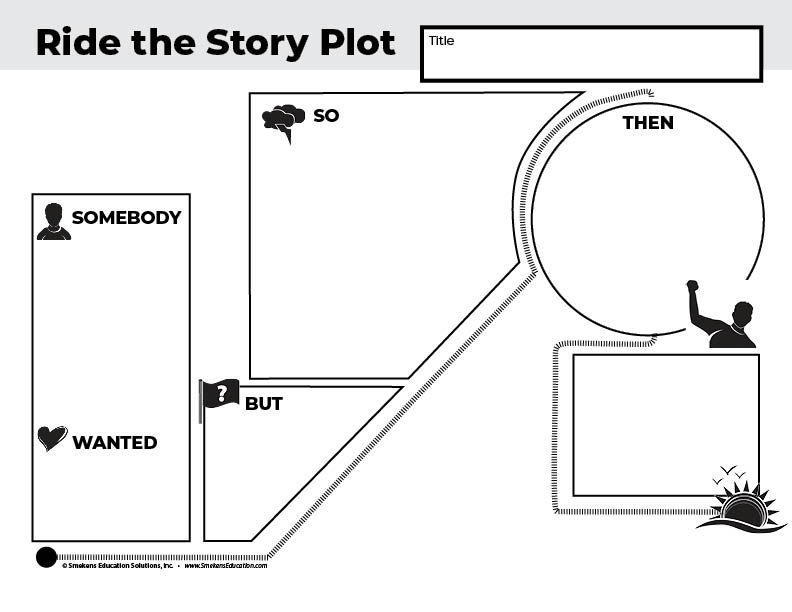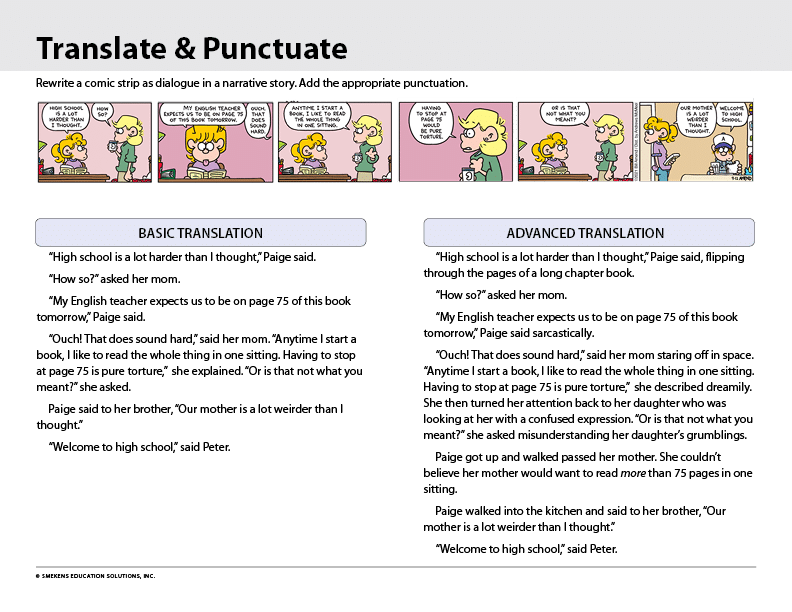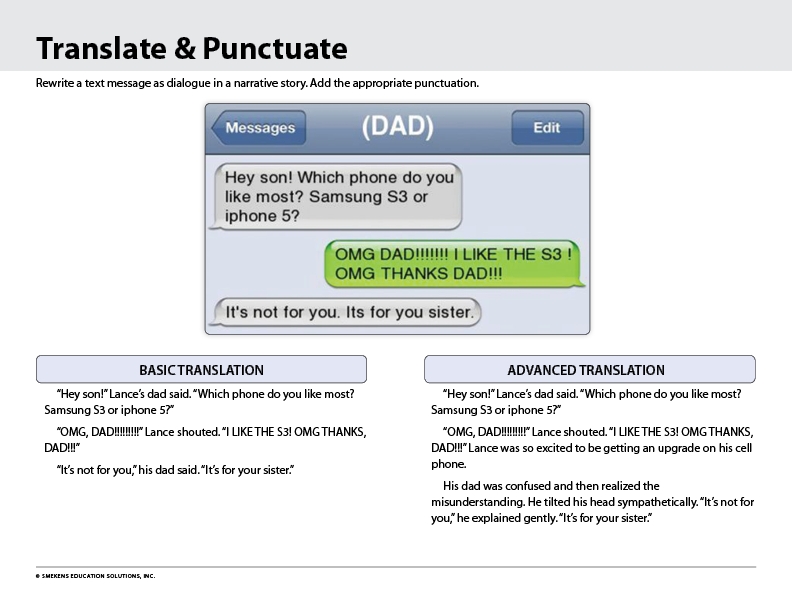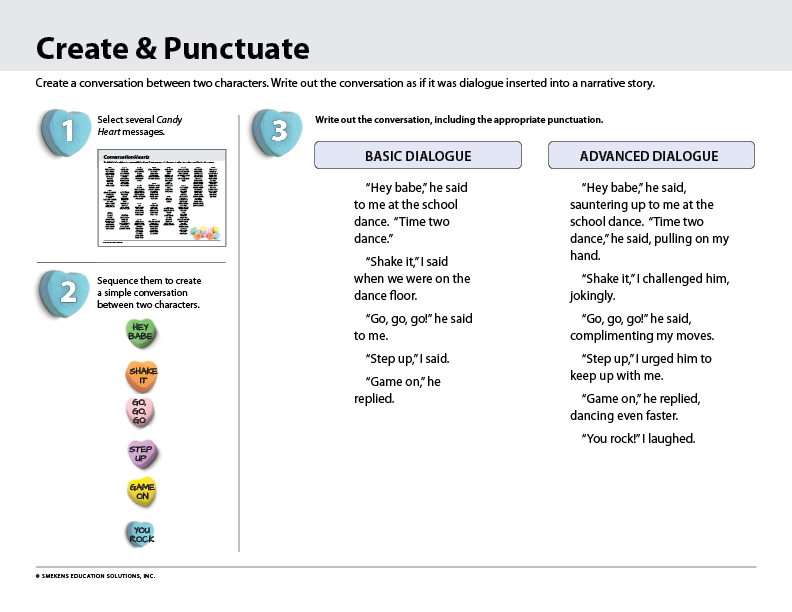Learning Center
writing
Follow 4 principles to add character dialogue to a story
november 14, 2023
A story needs a character with a conflict. A story needs a solution or resolution. But a story does not need dialogue. In fact, including large chunks of poorly written dialogue can take an otherwise great plot and weaken it.
Therefore, when teaching dialogue in narrative writing, define four important guidelines for students to follow.
1. Mute the characters initially.
Since the foundation of a narrative is its plot, it’s okay to keep characters muted until after the story’s problem and solution have been established. In other words, don’t let students include any dialogue within the first draft. This ensures that any character speech added won’t slow down the plot—or derail it.
Much of a story is presented by a narrator—the person describing the event. However, occasionally characters “talk.” With the story now outlined, teach them when, where, and how to insert dialogue.
2. Keep the chatter brief.
Effective dialogue is not filler. It is not chit-chat. It doesn’t require lengthy exchanges. In fact, dialogue that goes on for too long can be exhausting for the reader. So, teach students that the best dialogue is purposeful and brief.
Rather than transcribing an entire conversation from beginning to end, teach students how to use the narrator to describe characters entering a scene, greeting each other, and getting to the point of the meeting.
Then, quote only the most powerful, pivotal, and emotional sentences spoken by the characters in that moment. After those key lines are spoken, let the narrator wrap up the conversation describing how the characters say goodbye and leave the scene.
After clarifying when characters speak, reveal what they will say.
3. Advance the plot.
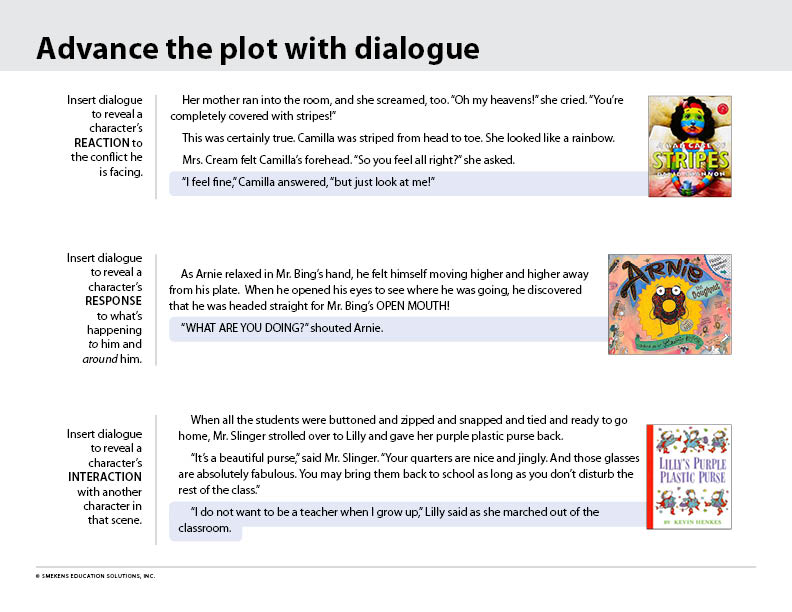 Just like every sentence stated by the narrator keeps the story moving, every sentence spoken by a character should also advance the reader on the story arc. Specifically, look to insert dialogue where the problem is identified, where the problem gets worse, and where the problem climaxes.
Just like every sentence stated by the narrator keeps the story moving, every sentence spoken by a character should also advance the reader on the story arc. Specifically, look to insert dialogue where the problem is identified, where the problem gets worse, and where the problem climaxes.
Model how to reread the first draft with an eye for inserting dialogue that reveals any or all of the following:
- A character’s reaction to the conflict he is facing (e.g., frustration, concern, fear, etc.).
- A character’s response to what’s happening to him and around him.
- A character’s interaction with another character in that scene (e.g., compete, cooperate, motivate, argue, etc.).
Once students know where they want to insert dialogue and exactly what they want the character to say, it’s time to teach them how to present it in writing.
4. Get the punctuation right.
Quotation marks alert the reader to what is being spoken by a character—versus everything else that is described by the narrator. This is an unspoken agreement between the writer and his readers. But, when students don’t punctuate dialogue correctly, the audience struggles to comprehend.
The 2 most basic conventions of dialogue are:
- Only the words that come out of a character’s mouth go INSIDE quotation marks.
- Punctuation marks that go with that speech also go INSIDE the quotation marks.
To illustrate this for students, project a memorable line of dialogue from a recently read text. Point to the beginning and ending quotation marks and tell students that each represents a pair of lips. The left one indicates the character’s mouth opens, and the right set shows he is done speaking with the closing of his mouth.
All adjacent words that indicate who said it and/or how it was said are OUTSIDE of the “lips.” These descriptions are provided by the narrator. They are known as speaker tags or attribution. Since these phrases were not actually uttered from the lips of the character, they are not to be included within the quotation marks.
Provide opportunities for students to practice applying the mechanics of dialogue without having to come up with a storyline, too.
- Provide each student with a comic strip that includes at least two characters talking via speech bubbles. Since speech bubbles represent what a character said out loud, have them translate the comic strip into a conversation on paper using quotation marks, paragraph indents, end marks, etc.
- Execute the same task using a school-appropriate text message “conversation.”
- Sequencing a variety of candy hearts, students develop a hypothetical conversation between two characters. Then they translate it into a written dialogue.
Eventually, assign students to return to a previously written narrative to insert dialogue that advances the plot and is punctuated correctly.
Students dabbling with dialogue during a narrative writing unit is typical. However, their initial attempts often include continuous, confusing, and clunky conversations between characters. Therefore, outline 4 principles to maximize the impact of this powerful narrative writing technique.


